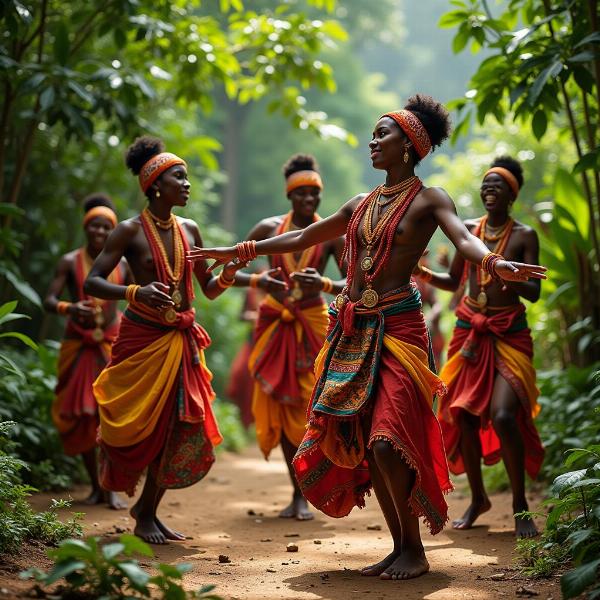Tribalism meaning in Hindi revolves around the term “आदिवासी” (Adivasi), which translates to “original inhabitants” or “aboriginal people.” Understanding tribalism in the Indian context goes beyond a simple translation. It requires delving into the rich cultural tapestry, historical experiences, and socio-political realities of these diverse communities. Tribalism, in its broadest sense, refers to the state of being organized in or according to tribes. However, when applied to India, it is crucial to understand the nuances associated with the term “Adivasi” and its connection to indigenous identities.
The Rich Tapestry of Adivasi Culture and Identity
India is home to a multitude of Adivasi communities, each with its unique language, customs, traditions, and beliefs. These communities have maintained a close relationship with nature, often inhabiting remote forest areas and practicing sustainable livelihoods. Adivasi culture is deeply rooted in oral traditions, passed down through generations through stories, songs, and rituals. Their spiritual practices are often animistic, revering nature and its elements. This deep connection to their ancestral lands and traditions forms a core aspect of Adivasi identity.
 Adivasi Tribal Dance in India
Adivasi Tribal Dance in India
Tribalism in India: Beyond the Simple Definition
While “tribalism” in a general sense can carry negative connotations of insularity and conflict, it is crucial to avoid such generalizations when discussing Adivasi communities in India. The term “Adivasi” itself is a politically charged one, representing a claim to indigenous rights and recognition. Adivasi people often face marginalization and discrimination, and their struggle for self-determination and the protection of their land and resources is a central theme in their history and current political landscape.
Social and Political Dynamics of Tribalism in India
Adivasi communities have historically faced challenges related to land alienation, displacement due to development projects, and lack of access to basic amenities like education and healthcare. Their struggle for recognition and rights has led to various social and political movements, demanding greater autonomy and control over their resources. Understanding the political dimensions of “tribalism” in India requires examining these historical and ongoing struggles for social justice and equality.
What are the key challenges faced by Adivasi communities in India?
Adivasi communities face a range of challenges, including:
- Land alienation: Loss of traditional lands due to development projects, mining, and industrialization.
- Displacement: Forced relocation from their ancestral lands, often without adequate compensation or rehabilitation.
- Poverty and lack of access to basic amenities: Limited access to education, healthcare, and other essential services.
- Marginalization and discrimination: Social and economic exclusion based on their indigenous identity.
- Threats to their cultural identity: The erosion of traditional languages, customs, and beliefs due to external influences.
How does the concept of “Jal, Jangal, Zameen” relate to Adivasi identity?
“Jal, Jangal, Zameen,” meaning “water, forest, land,” is a slogan that encapsulates the Adivasi struggle for control over their natural resources. It highlights their deep connection to their environment and their belief that their livelihood and cultural survival are intrinsically linked to these resources.
Conclusion: Beyond the Word “Tribalism”
Understanding “tribalism meaning in Hindi” necessitates moving beyond a simplistic definition and engaging with the complex realities of Adivasi communities. It requires acknowledging their rich cultural heritage, historical struggles, and ongoing fight for self-determination. By recognizing the nuances and complexities associated with the term “Adivasi,” we can gain a deeper appreciation for the diverse tapestry of indigenous identities in India.
FAQ
- What is the preferred term to use when referring to indigenous communities in India? Adivasi is the preferred term.
- Are all Adivasi communities the same? No, there is significant diversity among Adivasi groups, each with their own unique language, customs, and traditions.
- What are some prominent Adivasi movements in India? Several movements have emerged, focusing on land rights, autonomy, and social justice.
- How can I learn more about Adivasi culture and history? There are numerous books, documentaries, and academic resources available.
- What are some organizations working to support Adivasi communities? Many NGOs and grassroots organizations are actively involved in advocacy and development work.
- What is the significance of the term “indigenous” in this context? It emphasizes the historical presence and connection to the land prior to colonization.
- How does the Indian government recognize Adivasi communities? Through constitutional provisions and specific legislation aimed at protecting their rights.
Suggested Further Reading
(No related articles found at this time)
Meaning-Hindi.in offers professional translation services specializing in Hindi and other languages. We cater to a diverse clientele with services ranging from business and legal document translation to website localization and technical manual translation. Our team of expert linguists ensures accurate and culturally sensitive translations for various industries including educational, technical, and commercial sectors. Looking for reliable and professional translation services? Contact us today! Email: [email protected], Phone: +91 11-4502-7584. For more information, visit Meaning-Hindi.in.